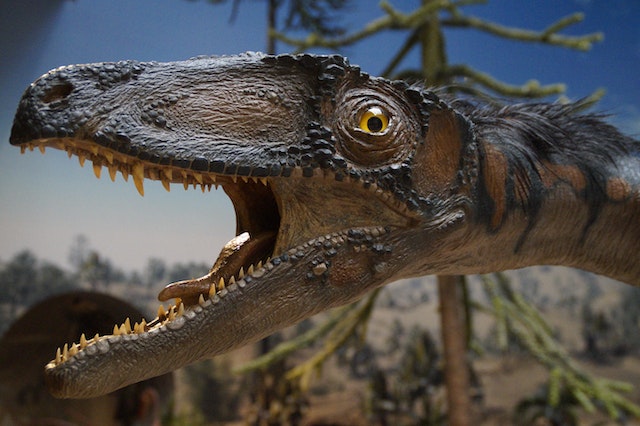Dinosaurs have always been a subject of immense fascination, captivating the minds of both young and old. These prehistoric giants have left an indelible mark on our imagination, and with every new discovery, we are continuously amazed by their diversity and uniqueness. Among the myriad of dinosaur species, one intriguing question that often arises is, “What’s a dinosaur with 500 teeth?” In this article, we embark on an exciting journey to uncover the secrets of these toothy dinosaurs, exploring their characteristics, species, and more. So, grab your paleontologist’s hat and let’s dig deep into the mesmerizing world of dinosaurs with 500 teeth.
What’s a Dinosaur with 500 Teeth?
At first glance, the idea of a dinosaur possessing 500 teeth might seem like an exaggeration or a fantastical notion from a science fiction novel. However, the existence of such dinosaurs is not mere fiction but rooted in reality. These remarkable creatures belong to a unique group known as the hadrosaurs, commonly referred to as “duck-billed dinosaurs.”
Hadrosaurs were herbivorous dinosaurs that lived during the Late Cretaceous period, approximately 75 to 65 million years ago. They were named after their distinctive flattened and elongated snouts that resemble the bills of modern-day ducks. But what sets them apart is their astonishing dental arrangement.
The dental batteries of hadrosaurs are nothing short of awe-inspiring. Instead of a single row of teeth like most animals, hadrosaurs possessed a vast array of closely packed teeth organized into dental batteries. These batteries lined their cheeks and, in some species, could contain up to an astonishing 500 teeth, making them one of the most unique dental structures among dinosaurs.
The Remarkable Anatomy of Hadrosaurs
Head and Skull Structure
The head and skull of hadrosaurs provide crucial insights into their dental peculiarities. The specialized structure of their skulls allowed them to efficiently process plant material and accommodate their extensive dental batteries. Additionally, their jaws had a sophisticated joint that enabled both vertical and sideways chewing motions, aiding in the breakdown of tough vegetation.
Dental Batteries – A Marvel of Nature
The dental batteries of hadrosaurs were a marvel of nature. Their teeth were constantly replaced throughout their lives, enabling them to maintain a functional dentition even as older teeth wore down or fell out. This continuous dental replacement process, known as dental occlusion, ensured that they always had a sufficient number of teeth for feeding.
The teeth themselves were unique as well. They were shaped like cylinders, with some species having ridges or wear facets that enhanced their grinding abilities. This dental adaptation allowed them to consume a variety of vegetation, from tough conifers to softer flowering plants, making them highly successful herbivores during their time.
Species Diversity
Hadrosaurs were a highly diverse group, with numerous species discovered across different parts of the world. Some well-known hadrosaur species include:
- Parasaurolophus: This species was recognized for its elaborate cranial crest, which varied in size and shape among different individuals. The crest likely played a role in vocalizations and communication.
- Edmontosaurus: Among the largest of the hadrosaur group, Edmontosaurus was a formidable herbivore with a distinctive solid crest on its head.
- Corythosaurus: This species boasted an impressive helmet-like crest that scientists believe could have been used to produce resonating sounds.
- Lambeosaurus: Characterized by its hatchet-shaped crest, Lambeosaurus inhabited regions that are now part of North America.
Discovering the Mysteries: How Did Hadrosaurs Use Their 500 Teeth?
The intriguing question of how hadrosaurs utilized their 500 teeth to process food has long puzzled paleontologists. However, through careful examination of their dental anatomy and comparisons with modern-day animals, scientists have developed some compelling theories.
Grinding Mechanism
The dental batteries in the cheeks of hadrosaurs suggest a grinding mechanism, akin to how modern herbivores process vegetation. As they chewed, the teeth in the dental battery would collectively grind against one another, effectively breaking down plant material for digestion.
Dentition Specialization
Hadrosaurs likely exhibited a degree of dentition specialization, with specific teeth adapted to handle particular types of plant matter. For instance, some teeth might have been more efficient at grinding tough plant fibers. while others excelled at masticating softer plant material. This specialization allowed them to have a versatile diet, essential for survival in changing environments.
Conclusion: A Glimpse into Prehistoric Marvels
In conclusion, understanding what’s a dinosaur with 500 teeth opens a window into the incredible diversity of prehistoric life on Earth. The hadrosaurs, with their unique dental batteries and remarkable adaptations, were truly marvels of evolution. Their fossilized remains continue to be a treasure trove of information. Offering valuable insights into the ancient ecosystems they once thrived in.
As we delve deeper into the world of dinosaurs. We are reminded of the ever-evolving nature of scientific inquiry and the wonders that still await discovery. So, the next time you encounter a question about the prehistoric past. Remember that there’s always more to learn, and the secrets of our planet’s history are waiting to be unveiled.

